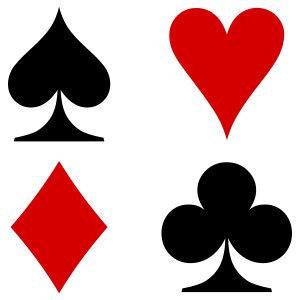The Magician

A magician has 52 cards (13 heart cards, 13 club cards, 13 diamond cards and 13 spades cards) and plays a game with Dena and Tara. In this game, there is a number \(n\) and a number \(k\), which the magician, Dena and Tara are aware of before the game starts.
Dena and Tara are teammates and their goal is to defeat the magician together. Before the game start, Dena and Tara fix a strategy for the game. When the game starts, the magician gives Dena \(n \leq 52\) cards, then Dena chooses \(k < n\) cards and shows them to Tara in the order of his choosing. After observing those cards and their order, Tara has to tell Dena what are the other \(n-k\) cards in his hand. If Tara can identify them correctly, Dena and Tara win the game, otherwise the magician wins.
first question: show that for \(n=5\) and \(k=4\), Dena and Tara can win the game.
challenge question: for what pairs of \(n\) and \(k\) can Dena and Tara win the game?
link to the problem on Twitter: https://twitter.com/Riazi_Cafe/status/1708371315856658706
Solution to the first problem: Let us assume for simplicity that each card has a suit and a number between 1 and 13. Also we define circular order of the cards in the following way: put the cards 1 to 13 in a circle in the clockwise order. The card after each card \(i\) will be \(i+1\) and the card after card number 13 will be card \(1\). Thus, the 5’th card ahead of card \(10\) would be card \(2\).
Out of the 5 cards that the magician gives to Dena, according to the pigeonhole principle, at least two cards have the same suit. Dena chooses 2 cards with the same suit (If there are more than two cards with this feature, he chooses two cards with the same suit arbitrarily). Among these two cards with the same suit, one of them is at most 6 cards ahead of the other one. Let this be card \(A\) and the other card be card \(B\).
Dena puts card \(A\) faced down (i.e., the card that Tara must guess) and shows card \(B\) as the first card to Tara. The next 3 cards that Dena shows to Tara will determine how many cards is \(A\) ahead of \(B\). Since there are 3 cards, Dena can make \(6\) permutations out of them and they can coordinate which number between 1 and 6 each permutation means. Then by giving the cards to Tara in that order, she can realize the distance between \(B\) and \(A\) and since she knows the suit of \(B\), she can find out what card \(A\) is. Thus, with this strategy, Tara and Dena can always win against the magician.
An example: We assume for simplicity that the suits are \(A, B, C, D\) and the numbers are \(1, 2, \ldots, 13\):
5 cards chosen by the magician: \(A3, C6, B11, A7, D8\).
2 cards with the same suit that Dena chooses: \(A3\) and \(A7\).
Dena puts \(A7\) faced down.
There are 6 permutations out of the remaining 3 cards: \[[B11,C6,D8], [B11,D8,C6], [C6,B11,D8], [C6,D8,B11], [D8,B11,C6] , [D8, C6, B11]\].
Since the distance of \(A7\) from \(A3\) is 4, Dena chooses the 4’th permutation (\([C6,D8,B11]\)).
Thus, the cards that Dena shows to Tara are \(A3, C6, D8, B11\), respectively.
When Tara sees the first card, she realizes that the faced down card’s suit is \(A\).
After seeing \(C6, D8, B11\), Tara realizes that the number of the card facing down is the 4’th next card to \(A3\).
So Tara realizes that the faced down card is \(A7\).
The solution to the challenging part:
Consider a bipartite graph, one part of which contains \(\binom{52}{n}\) vertices. Each vertex of that section represents the selection of \(n\) cards from the 52 cards. In the other part, the number of vertices is equal to \(\binom{52}{k} k!\) and each vertex represents a permutation \(k\) cards out of 52 cards. Each vertex \(x\) of the first part has an edge to all the vertices \(y\) of the second part such that all \(k\) cards corresponding to vertex \(y\) are among the \(n\) cards corresponding to the vertex \(x\). The number of edges of each vertex of the first part is equal to \(\binom{n}{k} k!\) and the number of edges of each vertex of the second part is equal to \(\binom{52-k}{n-k}\). Because the constructed graph is a bipartite graph where the degrees of the vertices of each part are equal, then there is a matching between the vertices of this graph that covers all the vertices of the smaller part.
In order for Dena and Tara to win, they must be able to agree on a matching that covers all vertices of the first part. Thus, Dena and Tara can defeat the magician if and only if \(\binom{52}{n} \leq \binom{52}{k} k!\)